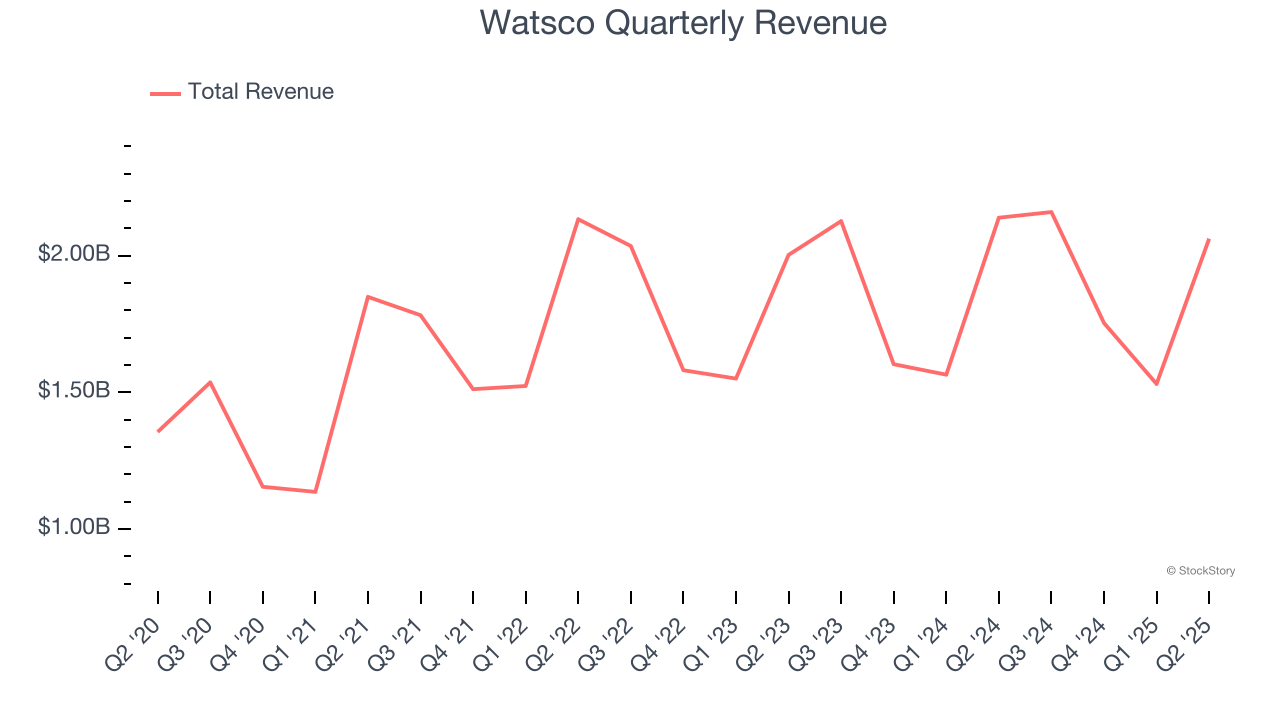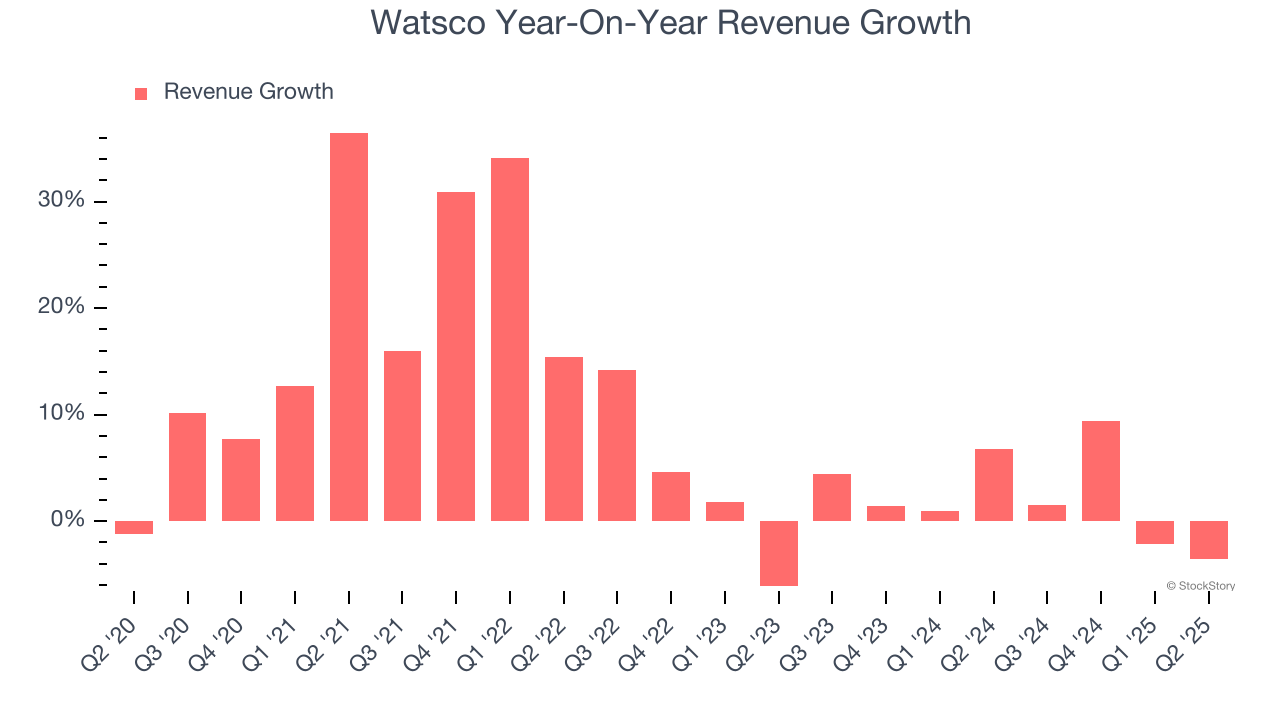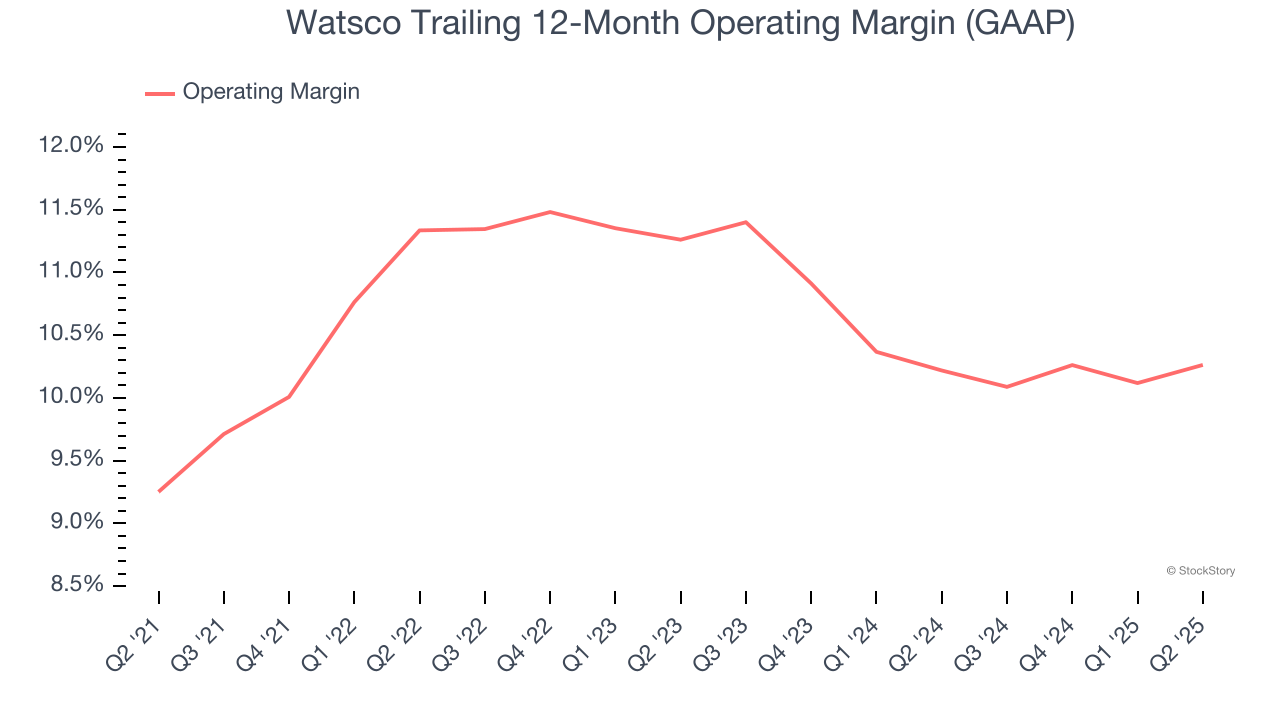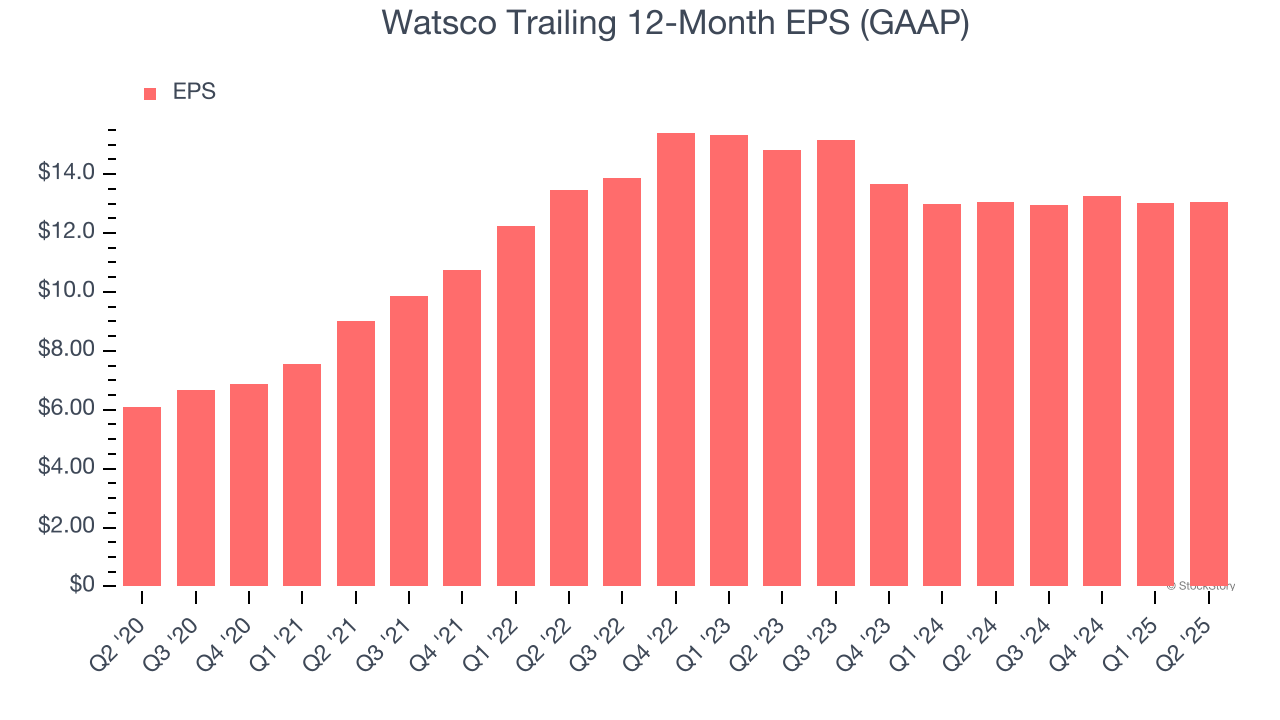
Equipment distributor Watsco (NYSE:WSO) missed Wall Street’s revenue expectations in Q2 CY2025, with sales falling 3.6% year on year to $2.06 billion. Its GAAP profit of $4.52 per share was 5.6% below analysts’ consensus estimates.
Is now the time to buy Watsco? Find out by accessing our full research report, it’s free.
Watsco (WSO) Q2 CY2025 Highlights:
- Revenue: $2.06 billion vs analyst estimates of $2.22 billion (3.6% year-on-year decline, 7.2% miss)
- EPS (GAAP): $4.52 vs analyst expectations of $4.79 (5.6% miss)
- Adjusted EBITDA: $282.8 million vs analyst estimates of $304.1 million (13.7% margin, 7% miss)
- Operating Margin: 13.2%, in line with the same quarter last year
- Free Cash Flow was -$14.04 million, down from $51.38 million in the same quarter last year
- Market Capitalization: $17.46 billion
Company Overview
Originally a manufacturing company, Watsco (NYSE:WSO) today only distributes air conditioning, heating, and refrigeration equipment, as well as related parts and supplies.
Revenue Growth
A company’s long-term sales performance is one signal of its overall quality. Any business can have short-term success, but a top-tier one grows for years. Luckily, Watsco’s sales grew at a solid 9.2% compounded annual growth rate over the last five years. Its growth beat the average industrials company and shows its offerings resonate with customers.

We at StockStory place the most emphasis on long-term growth, but within industrials, a half-decade historical view may miss cycles, industry trends, or a company capitalizing on catalysts such as a new contract win or a successful product line. Watsco’s recent performance shows its demand has slowed as its annualized revenue growth of 2.3% over the last two years was below its five-year trend. 
This quarter, Watsco missed Wall Street’s estimates and reported a rather uninspiring 3.6% year-on-year revenue decline, generating $2.06 billion of revenue.
Looking ahead, sell-side analysts expect revenue to grow 8.6% over the next 12 months, an improvement versus the last two years. This projection is above the sector average and implies its newer products and services will spur better top-line performance.
Today’s young investors won’t have read the timeless lessons in Gorilla Game: Picking Winners In High Technology because it was written more than 20 years ago when Microsoft and Apple were first establishing their supremacy. But if we apply the same principles, then enterprise software stocks leveraging their own generative AI capabilities may well be the Gorillas of the future. So, in that spirit, we are excited to present our Special Free Report on a profitable, fast-growing enterprise software stock that is already riding the automation wave and looking to catch the generative AI next.
Operating Margin
Operating margin is an important measure of profitability as it shows the portion of revenue left after accounting for all core expenses – everything from the cost of goods sold to advertising and wages. It’s also useful for comparing profitability across companies with different levels of debt and tax rates because it excludes interest and taxes.
Watsco has managed its cost base well over the last five years. It demonstrated solid profitability for an industrials business, producing an average operating margin of 10.5%. This result was particularly impressive because of its low gross margin, which is mostly a factor of what it sells and takes huge shifts to move meaningfully. Companies have more control over their operating margins, and it’s a show of well-managed operations if they’re high when gross margins are low.
Looking at the trend in its profitability, Watsco’s operating margin rose by 1 percentage points over the last five years, as its sales growth gave it operating leverage.

In Q2, Watsco generated an operating margin profit margin of 13.2%, in line with the same quarter last year. This indicates the company’s cost structure has recently been stable.
Earnings Per Share
Revenue trends explain a company’s historical growth, but the long-term change in earnings per share (EPS) points to the profitability of that growth – for example, a company could inflate its sales through excessive spending on advertising and promotions.
Watsco’s EPS grew at a spectacular 16.4% compounded annual growth rate over the last five years, higher than its 9.2% annualized revenue growth. This tells us the company became more profitable on a per-share basis as it expanded.

We can take a deeper look into Watsco’s earnings to better understand the drivers of its performance. As we mentioned earlier, Watsco’s operating margin was flat this quarter but expanded by 1 percentage points over the last five years. This was the most relevant factor (aside from the revenue impact) behind its higher earnings; interest expenses and taxes can also affect EPS but don’t tell us as much about a company’s fundamentals.
Like with revenue, we analyze EPS over a more recent period because it can provide insight into an emerging theme or development for the business.
For Watsco, its two-year annual EPS declines of 6.2% mark a reversal from its (seemingly) healthy five-year trend. We hope Watsco can return to earnings growth in the future.
In Q2, Watsco reported EPS at $4.52, up from $4.49 in the same quarter last year. Despite growing year on year, this print missed analysts’ estimates, but we care more about long-term EPS growth than short-term movements. Over the next 12 months, Wall Street expects Watsco’s full-year EPS of $13.04 to grow 12.6%.
Key Takeaways from Watsco’s Q2 Results
We struggled to find many positives in these results. Its revenue missed and its EBITDA fell short of Wall Street’s estimates. Overall, this was a softer quarter. The stock traded down 4.4% to $444 immediately after reporting.
Watsco didn’t show it’s best hand this quarter, but does that create an opportunity to buy the stock right now? What happened in the latest quarter matters, but not as much as longer-term business quality and valuation, when deciding whether to invest in this stock. We cover that in our actionable full research report which you can read here, it’s free.
